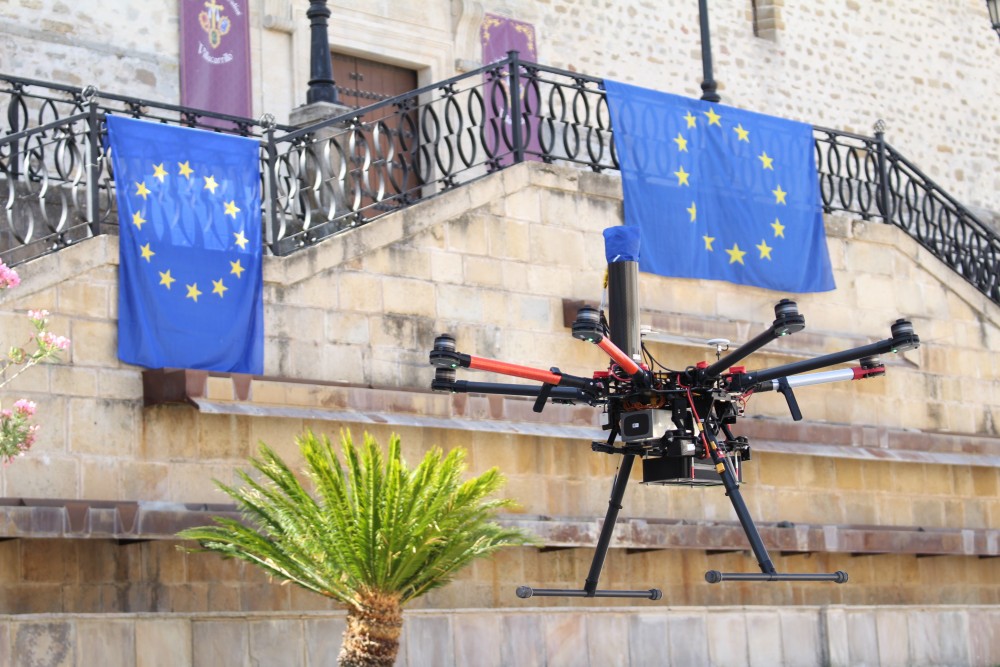The integration of unmanned aircraft (UAS), a pending challenge

Every century has one or more defining decades, with major changes driven by multiple cultural, political, economic, or technological developments that set the tone. In recent years, 21st century global society, and European society in particular, has reached a level of connectivity, digitization, and mobility previously unthinkable. It is precisely in these concepts of digitization, connectivity, and mobility where the most significant advances can be observed, especially with the emergence of unmanned aerial systems and vehicles (UAS/UAV) or remotely piloted aerial vehicles (RPAS).
The emergence of these aircraft, together with improved navigation concepts, has laid the foundations for an emerging sector that is gradually being integrated into society’s daily life. However, it is in the military world where these systems have had an earlier penetration and GMV is playing a leading role in developing onboard systems, supply and certification of UAS, and more. In particular, GMV, together with AUREA Avionics, has already supplied several Seeker UAS systems to the Spanish Ministry of Defense.
Despite this, it is in civilian life where these applications are expected to have the greatest impact, making increasingly automated operations feasible where a human presence will be reduced. In the collective imagination, we currently identify operations designed in principle to be carried out by drones, such as urgent transportation of medical products, sending aid to accident zones, and rapid monitoring of emergency areas, even reaching locations close to a crime.
However, all of these operations pose a common problem: the interaction of these systems in spaces with other manned aircraft and with people or objects unrelated to the operation. At present, the regulations seek to impose requirements based on the specific risk of each flight. It is in urban environments where efforts are being focused to try to develop a safe concept that also provides users with the flexibility to carry out their activities.
These regulations have to strike a delicate balance between the two conflicting visions of the aviation authorities (traditionally very guaranteeing and tending to regulate all aspects) and the users’ viewpoints (usually without prior aeronautical knowledge and with more relaxed procedures).
As an example, world-renowned distribution companies are thinking of developing a parcel service directly with UAS from the logistics center to customers’ homes. This specific case would cause hundreds of aircrafts to fly over urban centers, greatly increasing the risk of accidents, so much so that it could even harm the sector due to the lack of confidence of the population. That is why, the aim is to establish a clear procedure and sufficient safety conditions without becoming an insurmountable barrier for those who wish to do so in terms of bureaucracy and certifications.
It is clear that this process is by no means simple and the cases are almost infinite, which is why European institutions are developing the U-Space concept, a set of new airspace management services and procedures designed to guarantee access to airspace for unmanned aircraft and their interaction with conventional aviation, while ensuring the right to privacy and the safety of people and infrastructures.
To this end, U-Space services will be based on a high level of automation and autonomy. It is in defining, standardizing, and developing these services that GMV has been playing a key role in recent years. GMV has developed several U-Space services integrated within the Dronelocus© suite (Emergency Management Service, Tracking Service, Navigation Availability Prediction Service and Surveillance). These services have been evaluated in real operational environments, integrating with other U-Space applications within the DOMUS project, the Spanish U-Space demonstrator coordinated by ENAIRE. Other projects involving GMV’s participation, such as EGNSS4RPAS and SONORA, have laid the groundwork for the regulation needs of navigation systems and will continue to support the European Commission in all related activities. Furthermore, projects like SUGUS and EUGENE (currently being carried out), both also led by GMV, seek to provide technological solutions to facilitate and automate UAS/RPAS flight procedures in all types of environment.
Despite the difficulty of implementation, U-Space is expected to be able to guarantee the smooth running of drones in all operating environments and in all types of spaces, for all types of missions, and all categories of drones. This sector will be key to economic and technological development in the coming years. That is why European leadership’s task of making the U-Space model a world leader depends on the success of the work carried out jointly by industry and European institutions in defining it.
Author: Ginés Moreno López